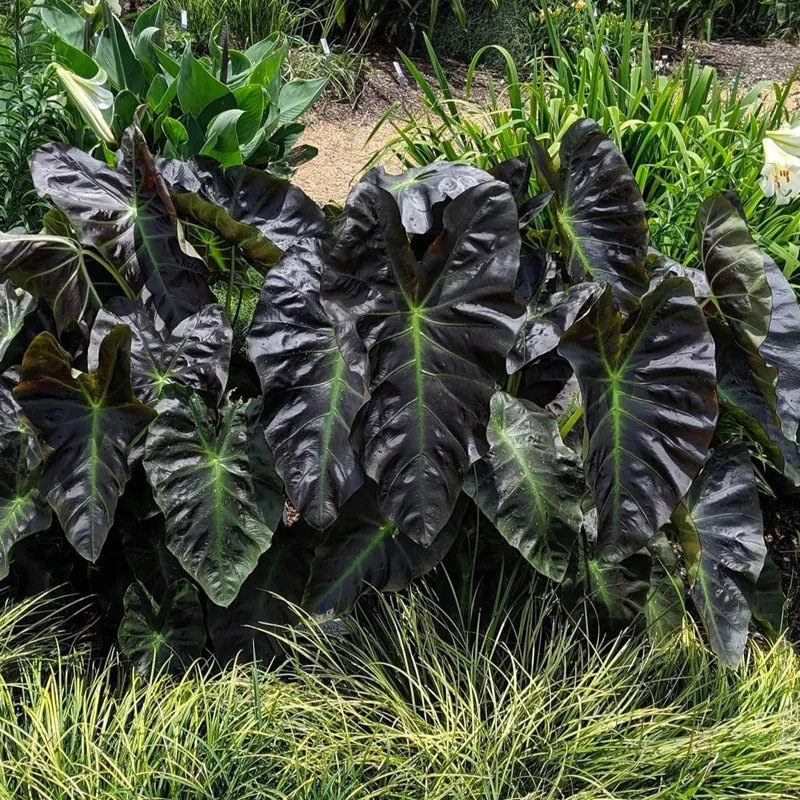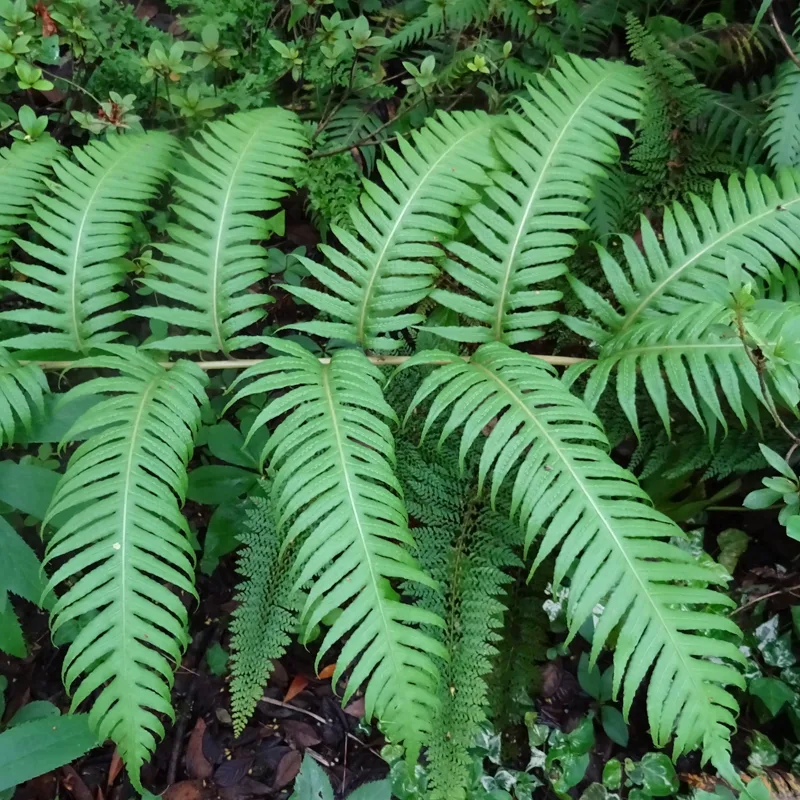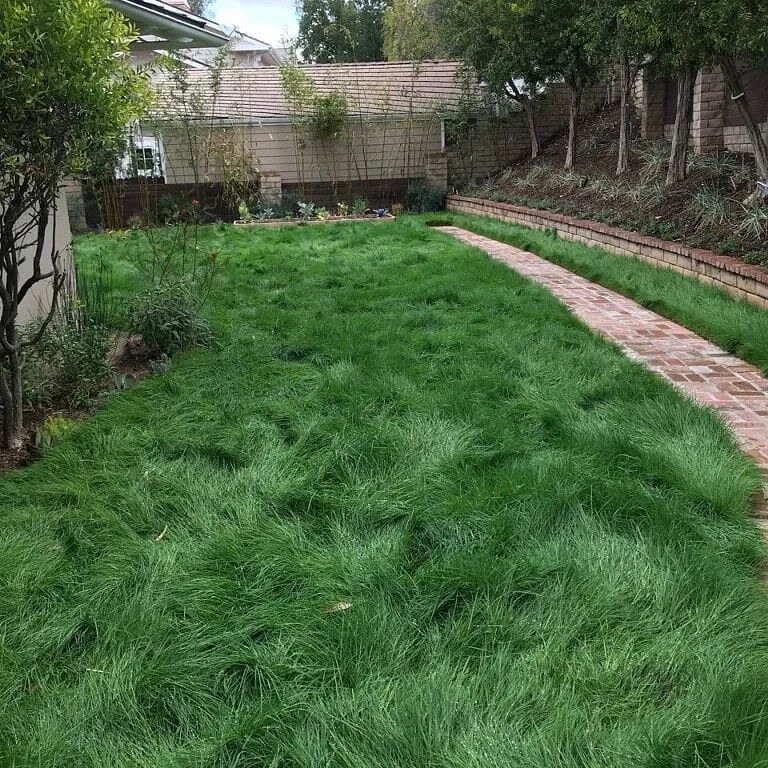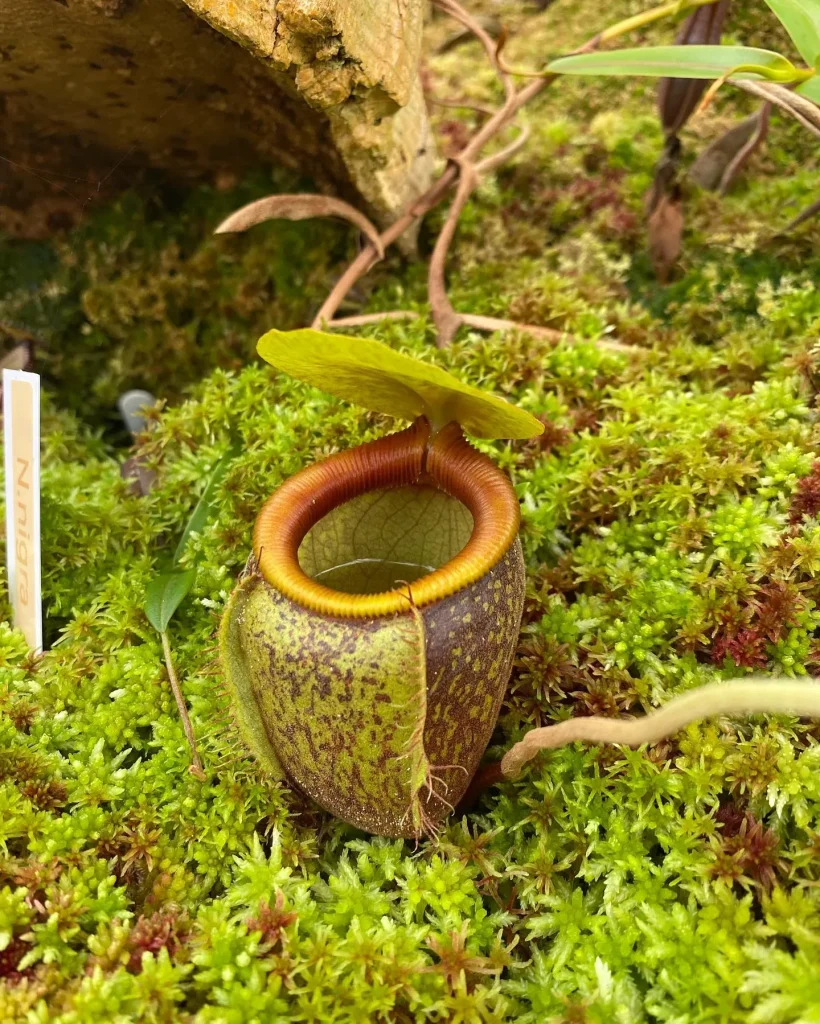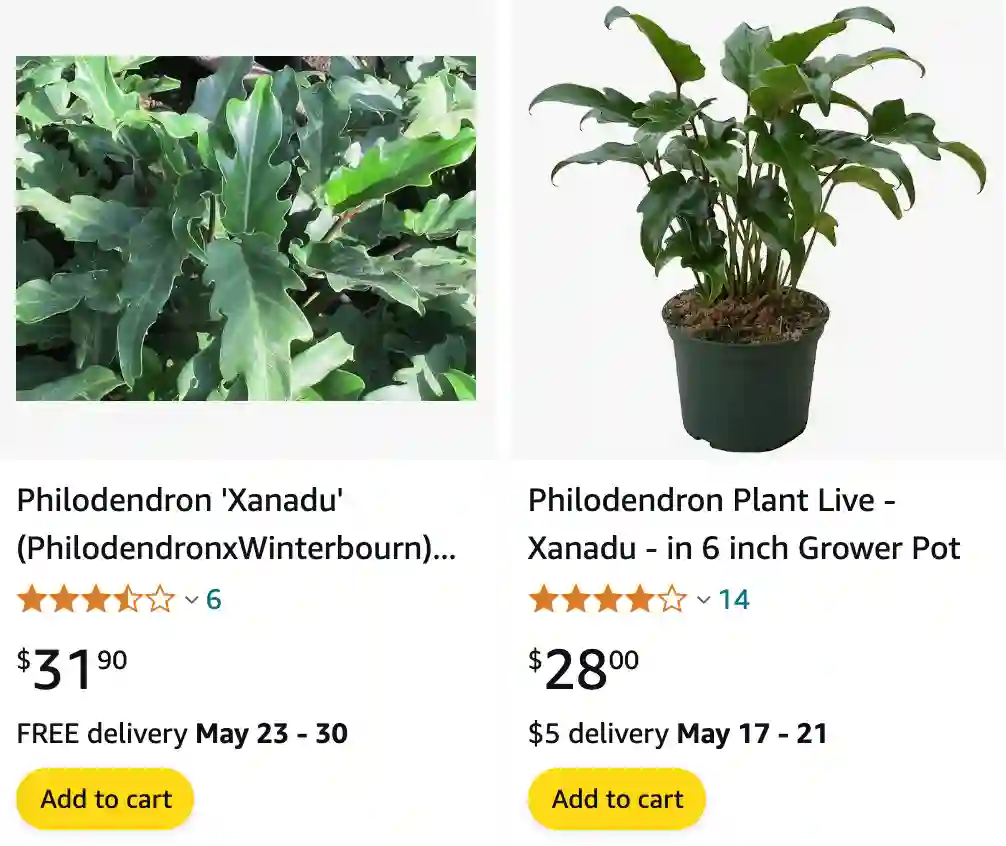
1. Introduction to Philodendron Xanadu: The Self-Heading Philodendron
1.1. What is Philodendron xanadu?
Philodendron xanadu, sometimes also referred to as ‘Winterbourn’ (its former cultivar name), is a popular and striking species within the Philodendron genus. Unlike many of its vining or climbing relatives, P. xanadu is a self-heading Philodendron, meaning it grows upright from a central stem, forming a compact, bushy, and mounding shape. It is highly valued for its dense foliage of deeply lobed, glossy green leaves, which can reach up to 2-3 feet in length. These distinctive, dissected leaves give it a lush, tropical appearance that instantly enhances any indoor space.
1.2. Reasons for its Appeal
Philodendron xanadu appeals to plant enthusiasts for several compelling reasons:
- Distinctive Foliage: Its deeply cut, glossy green leaves create a unique and exotic texture.
- Compact & Bushy Growth: Unlike many vining Philodendrons, its upright, mounding habit makes it ideal for floor plants or larger tabletops without requiring a moss pole.
- Relatively Easy Care: It is considered one of the more forgiving Philodendrons, making it suitable for beginners.
- Tropical Aesthetic: It brings an immediate lush, tropical feel to any interior.
2. Origins and Distinguishing Characteristics
2.1. Native Habitat
Philodendron xanadu is native to the tropical rainforests of Brazil. In its natural environment, it typically grows in the understory, receiving filtered light under the canopy of larger trees. It thrives in warm, humid conditions with rich, well-draining soil. Its upright growth habit is an adaptation to these conditions, allowing it to form a dense clump. Understanding its native environment is key to replicating ideal indoor growing conditions.
2.2. Leaf Morphology
The most defining characteristic of Philodendron xanadu is its leaves. They are deeply lobed or dissected, with multiple prominent “fingers” extending from a central midrib. The leaves are typically a vibrant, glossy dark green and can grow quite large, reaching lengths of 2-3 feet (60-90 cm) in mature specimens. Unlike climbing Philodendrons that often develop fenestrations (holes or splits) as they mature and climb, P. xanadu‘s primary leaf morphology is its deep lobing.
2.3. Growth Habit and Rate
Philodendron xanadu exhibits a unique self-heading, upright, and bushy growth habit. It grows from a central stem and expands outwards, forming a dense, rounded mound of foliage. This means it generally does not require staking or a moss pole. Its overall plant size tends to be moderate, with its leaves typically reaching around 2 to 3 feet in length. It has a moderate growth rate, gradually filling out its space over time.
2.4. Toxicity
Like most other Philodendron species, Philodendron xanadu is considered toxic to pets (cats, dogs) and humans if ingested. It contains calcium oxalate crystals, which can cause irritation and swelling of the mouth, throat, and digestive tract, leading to discomfort, vomiting, and difficulty swallowing. It is advisable to keep this plant out of reach of pets and small children.
2.5. Comparison to Similar Plants (Thaumatophyllum bipinnatifidum / Philodendron selloum)
Philodendron xanadu is often confused with or compared to other deeply lobed Aroids, particularly the larger Thaumatophyllum bipinnatifidum (formerly known as Philodendron selloum or Philodendron bipinnatifidum). Here’s a key distinction:
- Philodendron xanadu:
- Size: Grows to a moderate size, typically 2-4 feet (60-120 cm) tall and wide, forming a compact bush.
- Stem: Has a relatively short, non-woody stem that often remains hidden by foliage.
- Leaves: Deeply lobed but generally smaller and less complex than T. bipinnatifidum.
- Growth Habit: Self-heading, bushy, and upright. Ideal for indoor containers.
- Thaumatophyllum bipinnatifidum (formerly Philodendron selloum):
- Size: Grows much larger, potentially reaching 10-15 feet (3-4.5 m) tall and wide outdoors, with a significant woody trunk indoors.
- Stem/Trunk: Develops a prominent, thick, woody trunk with visible leaf scars as it matures.
- Leaves: Very large, deeply dissected, and often more intricately lobed or ‘feathered’.
- Growth Habit: Large, tree-like, and more sprawling. Requires substantial space.
While both offer a striking tropical aesthetic with lobed leaves, P. xanadu is the more manageable and compact option for typical indoor environments.
3. Comprehensive Care Guide: Nurturing Your Xanadu
Cultivating a thriving Philodendron xanadu involves providing consistent care that closely mimics its tropical origins, ensuring its lush growth and vibrant appearance.
Table 1: Quick Care Guide for Philodendron Xanadu
| Care Factor | Requirement Description |
|---|---|
| Light | Bright, indirect light. Tolerates medium light. Avoid direct sun. |
| Temperature | Ideal range: 18-27°C (65-80°F). Avoid below 15°C (59°F) or cold drafts. |
| Humidity | Prefers moderate to high humidity (50%+). Tolerates average home humidity. |
| Watering | Water when top 1 inch of soil is dry. Allow partial drying. Avoid overwatering. |
| Soil | Well-draining, airy, rich in organic matter (aroid mix, or potting soil + perlite + orchid bark). |
| Fertilization | Balanced liquid fertilizer, diluted, monthly during spring/summer. Withhold in winter. |
| Pruning | Remove old/damaged leaves, prune for shape. |
| Repotting | Every 2-3 years, or when root-bound, in spring. Increase pot size slightly. |
3.1. Light Requirements
Philodendron xanadu thrives in bright, indirect light, similar to the dappled sunlight it receives in its native understory habitat. Place your plant near a window that gets plenty of ambient light but is shielded from direct sunbeams, especially during the harsh afternoon hours. East or north-facing windows are often ideal. For south or west-facing windows, use a sheer curtain to diffuse intense light or place the plant a few feet away from the window. Direct sunlight can easily scorch its leaves, leading to unsightly brown spots. While it can tolerate medium light conditions, insufficient light will result in slower growth, smaller leaves, and a less dense, bushy form.
3.2. Temperature and Humidity
As a plant from warm, humid climates, Philodendron xanadu prefers consistently warm temperatures, ideally ranging from 18-27°C (65-80°F). It’s crucial to protect it from temperatures dropping below 15°C (59°F), as cold conditions can stress the plant, slow growth, and cause leaf damage. Avoid placing the plant near cold drafts from open windows, air conditioning vents, or heating units.
Philodendron xanadu appreciates moderate to high humidity levels, ideally 50% or higher. While it can often tolerate average household humidity, optimal growth and pristine leaf appearance are achieved with higher moisture levels. Signs of insufficient humidity might include crispy brown leaf edges or tips. You can boost humidity by using a room humidifier, placing the pot on a pebble tray filled with water (ensuring the pot itself doesn’t sit in the water), or grouping the plant with other moisture-loving plants to create a humid microclimate. Regular misting can also provide a temporary boost.
3.3. Watering Practices
Proper watering is critical for Philodendron xanadu. It prefers its soil to dry out partially between waterings to prevent root rot. Water thoroughly when the top 1 inch (2.5 cm) or so of the soil feels dry to the touch. Ensure that the pot has excellent drainage holes and that any excess water drains out completely from the bottom. Never allow the plant to sit in standing water. Overwatering is more detrimental than underwatering and can lead to yellowing leaves, drooping foliage, or mushy stems.
The frequency of watering will depend on environmental factors like light, temperature, and humidity, as well as the pot size and soil mix. Expect to water more often during the warmer, active growing months (spring and summer), typically about once a week. During the cooler, dormant months of fall and winter, reduce watering frequency significantly, allowing the soil to dry out more thoroughly between waterings.
3.4. Optimal Soil Mix and Repotting
A well-draining, airy, and nutrient-rich potting mix is essential for Philodendron xanadu. This mimics the loose, organic matter it would find in its native environment. An ideal mix should promote good aeration while retaining sufficient moisture. A suitable blend can include:
- High-quality indoor potting mix (approximately 50%)
- Perlite or pumice (approximately 20-30%) for excellent drainage and aeration
- Orchid bark (approximately 20-30%) for chunkiness and improved air circulation
Repotting: Repot your Philodendron xanadu typically every 2-3 years, or when you notice it has become root-bound (roots growing out of drainage holes, water running straight through the pot too quickly, stunted growth). Spring is the best time to repot, as the plant is entering its active growth phase. Choose a new pot that is only slightly larger than the previous one (e.g., 1-2 inches larger in diameter), ensuring it has ample drainage.
3.5. Fertilization Strategies
During its active growing season (spring and summer), fertilize your Philodendron xanadu monthly with a balanced liquid fertilizer, diluted to half the recommended strength. This provides the necessary nutrients to support vigorous growth and maintain its lush foliage. Reduce or completely stop fertilizing during the fall and winter months when the plant’s growth naturally slows. Over-fertilization can lead to salt buildup in the soil, which can burn the roots and cause leaf damage (e.g., crispy brown tips). Always water the plant thoroughly before applying fertilizer to protect the roots.
3.6. Pruning and Maintenance
Regular pruning is beneficial for Philodendron xanadu to maintain its compact, bushy shape and remove any unhealthy foliage. You can prune off any yellowing, browning, or damaged leaves using clean, sharp scissors or pruning shears. Pruning can be done as needed throughout the year, but major shaping is best done during the active growing season. Regularly wipe the leaves with a damp cloth to remove dust, which improves the plant’s ability to photosynthesize and keeps the foliage looking vibrant.
4. Propagation Techniques: Expanding Your Collection
Propagating Philodendron xanadu is a straightforward way to create new plants. The most common and effective method is using stem cuttings. The best time for propagation is during the spring or early summer when the plant is actively growing.
4.1. Stem Cuttings
- Select a Healthy Stem: Choose a healthy, mature stem section that has at least one node (the point where a leaf emerges from the stem) and preferably one or two healthy leaves.
- Sterilize Tools: Always use clean, sharp, and sterilized pruning shears or a knife to make your cuts. This prevents the spread of diseases.
- Make the Cut: Cut the stem just below a node. Remove any lower leaves that would be submerged in your chosen rooting medium to prevent rot.
- Rooting Hormone (Optional): Applying a rooting hormone (powder or gel) to the cut end can stimulate faster and more robust root development.
- Rooting Medium Options:
- Water Propagation: Place the cutting in a clear jar with fresh water, ensuring the node is fully submerged. Change the water every few days to keep it clean and prevent bacterial growth. Roots typically begin to form within a few weeks.
- Sphagnum Moss: Plant the cutting in moist, but not soggy, sphagnum moss. This medium provides excellent aeration and moisture retention, often leading to robust root development.
- Soil: You can also plant the cutting directly into a small pot filled with a well-draining, airy potting mix. Keep the soil consistently moist but not soggy.
- Provide Optimal Environment: Place your cuttings in a warm location that receives bright, indirect light. High humidity (e.g., within a propagation box or covered with a clear plastic bag to create a mini-greenhouse effect) will significantly accelerate the rooting process.
- Potting Up: Once the roots are a few inches long (for water or moss propagation), or significant new leaf growth is visible (for soil propagation), your new plant is ready to be transitioned to a larger pot with its permanent potting mix.
5. Troubleshooting Common Issues: Pests, Diseases, and Environmental Stress
While generally robust, Philodendron xanadu can encounter a few common problems if its specific care requirements are not met. Prompt identification and action are crucial for maintaining its health.
Table 2: Common Problems & Troubleshooting for Philodendron Xanadu
| Problem | Symptoms | Solutions/Treatment |
|---|---|---|
| Yellowing Leaves | Older, lower leaves turning yellow. | Overwatering (most common), nutrient deficiency, natural aging. Adjust watering, fertilize, check roots for rot. |
| Brown Crispy Edges/Tips | Leaves browning and feeling crispy at edges. | Low humidity, underwatering, direct sun exposure. Increase humidity, adjust watering, move to indirect light. |
| Drooping Leaves | Leaves losing turgor, looking limp. | Underwatering (most common), severe overwatering (root rot), cold shock. Check soil moisture, inspect roots, ensure warmth. |
| Stunted Growth/Smaller Leaves | Slow growth, new leaves are smaller than typical. | Insufficient light, nutrient deficiency, root-bound. Provide brighter light, fertilize, repot. |
| Leggy Growth | Long stems with sparse leaves. | Insufficient light. Move to brighter location. Prune to encourage bushier growth. |
| Pest Infestations | Visible pests (mealybugs, spider mites, thrips, scale), sticky residue, distorted growth. | Isolate plant, treat with insecticidal soap, neem oil, or appropriate pesticides. Increase humidity. |
| Root Rot | Mushy stem base, black/brown, foul-smelling roots, yellowing/wilting. | Overwatering, poor drainage. Repot, trim rotten roots, improve drainage, reduce watering. |
| Fungal Leaf Spot | Various spots on leaves. | Improve air circulation, reduce humidity if too high, remove affected leaves. Fungicides if severe. |
5.1. Watering Issues
- Overwatering: This is the most common cause of problems. Symptoms include yellowing leaves (particularly older, lower ones), drooping leaves (despite wet soil), mushy stems, and eventually root rot.
- Solution: Allow the top 1 inch of soil to dry out completely between waterings. Ensure the pot has excellent drainage. If root rot is suspected, unpot the plant, trim any rotted, mushy roots, and repot in fresh, well-draining soil. Reduce watering frequency.
- Underwatering: Symptoms include drooping, crispy, or curling leaves, and overall dull foliage. The plant may look visibly thirsty.
- Solution: Increase watering frequency. Ensure you are watering thoroughly so that water drains from the bottom of the pot, indicating the entire root ball has been moistened.
5.2. Light Issues
- Insufficient Light: Leads to slower growth, smaller leaves, and a less dense, leggy growth habit as the plant stretches for light.
- Solution: Move the plant to a location that receives brighter, indirect light. Consider supplementing with a grow light if natural light levels are consistently low.
- Too Much Direct Light: Harsh direct sun, especially midday or afternoon sun, can cause leaf scorch. Symptoms include brown or faded patches on the leaves.
- Solution: Relocate the plant to a spot with filtered light, or use sheer curtains to diffuse intense sunlight.
5.3. Humidity and Temperature Stress
- Low Humidity: While generally adaptable, very low humidity can cause crispy brown leaf edges or tips.
- Solution: Increase ambient humidity using a humidifier, pebble tray, or by grouping plants together.
- Cold Stress: Exposure to temperatures below 15°C (59°F) can severely stress the plant, leading to leaf damage, wilting, and overall decline.
- Solution: Ensure the plant is in a consistently warm environment and protected from cold drafts from windows or air vents.
5.4. Pests
Common houseplant pests like mealybugs, spider mites, thrips, and scale can occasionally infest Philodendron xanadu.
- Symptoms: Visible insects (mealybugs with white, cottony masses; spider mites with fine webbing; thrips with silver streaks and black frass; scale with hard, immobile bumps), sticky residue (honeydew), or speckled, distorted leaves.
- Solution: Regularly inspect your plant, especially the undersides of leaves and stem crevices. Isolate infested plants immediately. Treat with appropriate organic pest control methods such as insecticidal soap, neem oil, or by wiping pests off with an alcohol-dipped cotton swab. Increasing humidity can help deter spider mites.
5.5. Diseases
- Root Rot: This is a serious fungal disease, almost always a result of overwatering and poorly draining soil.
- Symptoms: Yellowing, wilting leaves (even when the soil is wet), a mushy stem near the soil line, and black/brown, foul-smelling roots.
- Solution: Immediately remove the plant from its pot. Carefully inspect the roots and prune away all affected (mushy, black) sections with sterilized shears. Repot the plant in fresh, well-draining aroid mix, and adjust your watering schedule to allow the soil to dry adequately between waterings.
- Fungal Leaf Spot: Can appear as various spots on the leaves.
- Solution: Improve air circulation around the plant, reduce overly high humidity, and remove affected leaves. Fungicides may be used in severe cases.
6. Conclusion: Enjoying Your Thriving Philodendron Xanadu
Philodendron xanadu, with its lush, deeply lobed leaves and compact growth habit, is a truly rewarding plant to cultivate. By consistently providing it with bright, indirect light, appropriate watering, adequate humidity, stable warm temperatures, and a well-draining soil mix, you can ensure your P. xanadu thrives. While it demands attention to its specific needs, the reward of nurturing its vibrant beauty and watching it grow into a full, bushy specimen will bring immense satisfaction and a distinctive tropical flair to your indoor space.
If i die, water my plants!
